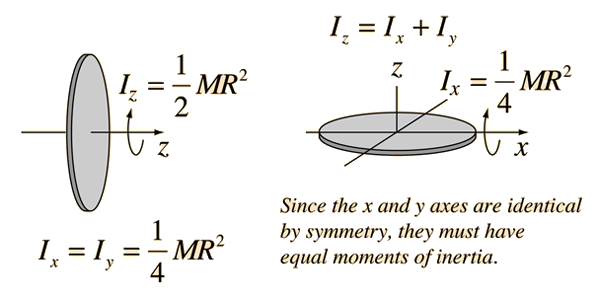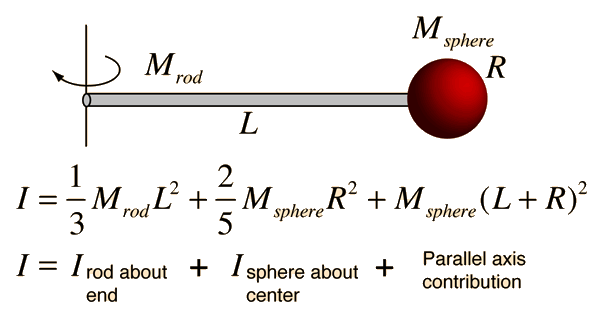Principal Axes
The use of Newton's second law for rotation involves the assumption that the axis about which the rotation is taking place is a principal axis. Since most common rotational problems involve the rotation of an object about a symmetry axis, the use of this equation is usually straightforward, because axes of symmetry are examples of principle axes. A principal axis may be simply defined as one about which no net torque is needed to maintain rotation at a constant angular velocity. The issue is raised here because there are some commonly occurring physical situations where the axis of rotation is not a principal axis. For example, if your automobile has a tire which is out of balance, the axle about which it is rotating is not a principal axis. Consequently, the tire will tend to wobble, and a periodic torque must be exerted by the axle of the car to keep it rolling straight. At certain speeds, this periodic torque may excite a resonant wobbling frequency, and the tire may begin to wobble much more violently, vibrating the entire automobile.
|
Index
Moment of inertia concepts |

